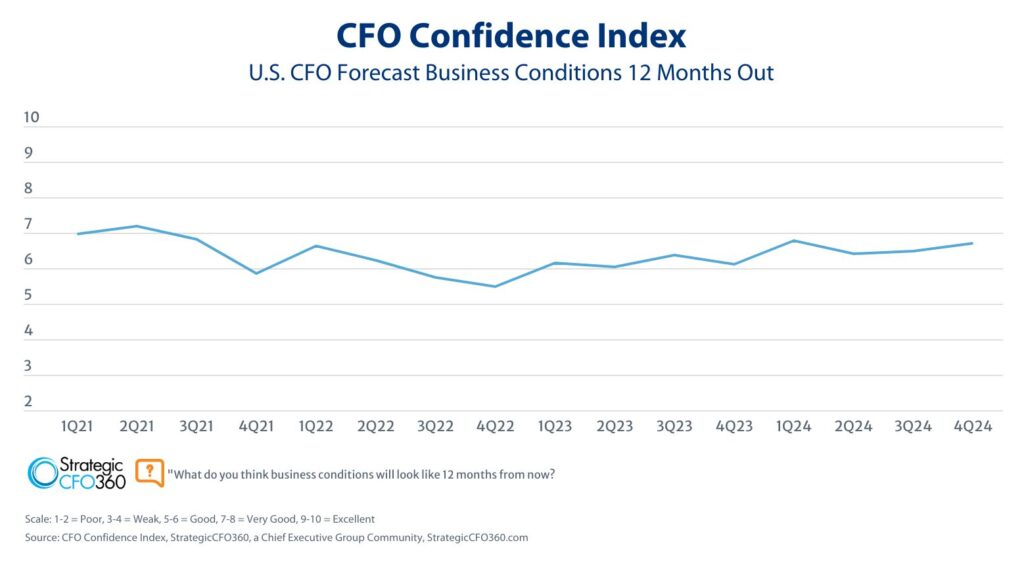Value-added services are very different from traditional standalone products and services. They are increasingly important to most companies’ success, but they require distinct pricing and management strategies.
Managed adroitly, they are prime contributors to a company’s strategic differentiation and profitable growth; managed as traditional standalone customer offerings, they will be both competitively ineffective and breakeven at best.
It is very helpful to think about value-added services, like vendor-managed inventory or product co-design, as “extended products”—that is, the combined set of products and services that produce integrated value for customers. This is very different from simply adding another set of traditional standalone products as a product line extension or opening another serving location.
Three Examples
A number of years ago, Baxter was boxed into an untenable situation. The company distributed hospital supplies that were commoditized and subject to constant price wars. Baxter carefully controlled its costs, but the relentless price pressure was inexorably reducing its already-thin margins.
Baxter’s CEO appointed a team to develop a new way to frame the business. The team determined that Baxter’s supply chain was very efficient, but surprisingly, the company had little knowledge of what happened to the products within its hospital customers.
The team developed a joint project with a major hospital customer to map and cost the entire joint hospital-Baxter supply chain, from identifying a need for an order to providing the items to the patients’ bedside. They were astonished to find, for example, that if a liter of IV solution sold for, say, $1 delivered to the hospital’s receiving dock, the total supply chain cost by the time it reached the patient’s bedside was over $7. Of the $6 incremental cost, about $3 of cost were avoidable through simple, but previously hidden, measures like eliminating redundant steps.
The team developed a new business concept called vendor-managed inventory (VMI), which is now a standard way that many vendors coordinate with their customers. In this process, Baxter stationed an operations supervisor in each major customer. The supervisor was responsible for counting the supplies needed in each patient care area and clinic, then transmitting the order directly to Baxter’s distribution center (DC) where it was picked using automation and packed in a destination-labelled tote. That evening, Baxter delivered the tote directly to the patient care area or clinic that needed it, and the Baxter onsite supervisor put the product away at its ultimate destination.
This new extended product (physical product plus in-hospital supply chain services) created three huge new benefits: one expected, one surprising and one astonishing.
- Expected: The hospital’s cost dropped by over 30 percent, causing the hospital’s CEO to simply ask Baxter two questions: Can you really do this? and, Can we trust you? The answer to both questions was, yes.
- Surprising: Baxter’s own costs plummeted by over 20 percent, as the company now controlled the hospital’s order pattern, and could optimize it across the whole intercompany supply chain.
- Astonishing: Baxter’s revenues in its most highly penetrated customers rose by over 35 percent, fueled by the new system’s cost savings and ease of use.
In a very different industry, Nalco was experiencing relentless price wars on the chemicals it delivered to major customers like municipal water treatment systems. In searching for new supply chain efficiencies, one manager suggested that the company install sensors with wireless transmitters in its major customers’ chemical tanks so Nalco could “read” the customers’ chemical inventory levels remotely, and “push in” product as needed. This enabled the company to schedule its production and deliveries much more efficiently, significantly reducing its cost.
However, one astute Nalco engineer noticed that the company could use its customer inventory level readings to monitor the efficiency of the customer’s water treatment process based on the rate of chemical drawdown; if there was a problem, Nalco would quickly call the customer so the customer could make the needed adjustments.
The cost of water treatment chemicals for a major system often was a fraction of the value of the customer’s process efficiency improvement, eliminating the commoditization of Nalco’s chemicals. Nalco’s revenues and profits soared, as more and more customers signed up.
Importantly, both Baxter’s VMI and Nalco’s integrated supply chain had very strong switching costs that created high barriers to entry against potential competitors.
In a third example, SKF Bearings, a ball bearing supplier, was experiencing constant price wars in its aftermarket business. The company appointed a new manager to head this business. He quickly saw that the aftermarket had two major segments, each with a very different need.
The automobile aftermarket customers’ biggest problem was determining which bearing was needed for a repair, and assembling the ancillary products, instructions and tools for the job. In response, SKF developed a broad assortment of “kits,” each containing the full set of products and information for the particular customer job. In many cases, the ancillary products and tools had to be outsourced, and actually cost more than the bearings. Nevertheless, the kits were very popular, prices rose and sales soared.
The industrial machine aftermarket customers’ primary problem was very different. The downtime required to tear down a machine to get at the problematic bearing was very costly, so the leverage was to find ways to reduce the need for a change of bearing. In response, the SKF manager developed bearing maintenance programs for widely used machines. Each program had lubricants, instructions, tools and spare bearings. The cost of the bearings, themselves, was often dwarfed by the cost of the other program elements.
Nevertheless, like the automotive bearings, the value-added of the combined package (including outsourced elements) was enormous. The programs were very popular, prices increased and sales climbed. And, like Baxter and Nalco, the new extended product created very high switching costs and barriers to entry.
A New Business Era
About 20 years ago, the rapid rise of the internet created a new and completely different business era, which I call the Age of Diverse Markets.
In industry after industry, the internet enabled Amazon and other digital giants to capture the low-service segment of the formerly homogeneous mass markets. The digital giants achieved rapid success with one primary strategy: providing a wide variety of products to a broad set of customers at arm’s length at very low cost in an information-rich environment.
While many managers have focused fruitlessly on trying to stop the digital giants’ incursion into their revenue, an increasing number have turned to the higher-service segment of their market, where the profits are high, growth is assured and barriers to entry are strong.
In this prized segment, value-added services are the key to success: They ensure years of strong, profitable growth. But they require very different pricing and management processes.
Different Pricing and Management Processes
Value-added services are completely different from traditional standalone products and services in two important respects: (1) the value produced is very complex and difficult to identify, ranging from internal vendor cost savings to important customer benefits, and (2) their cost structure is also very complex, with a number of difficult-to-untangle joint costs shared with the company’s standalone products.
Value. Returning to the Baxter example, its VMI innovation created three separate and important streams of new value: (1) the hospitals’ supply chain cost dropped precipitously, (2) Baxter’s supply chain cost plummeted, and (3) Baxter’s revenue and profits grew as the efficiencies of new VMI system attracted more and more product conversions.
Generally, the value produced can be clustered into these three buckets. Importantly, some value-added services actually enable the customer to transform its business strategic paradigm. For example, Baxter’s hospital customers found that the Baxter VMI was so easy to use and reliable, that they were comfortable opening new remote clinics and facilities supported jointly by the hospital and Baxter.
Cost. The VMI innovation required some unique services, like the Baxter supervisors in the major hospital customers. Other services, like certain activities within Baxter’s DC, supported both the company’s standalone product distribution business and the new VMI business. Similarly, some overheads were largely or completely attributable to one business or the other, while others were joint and shared.
Two-Step Process
Estimating and tracking the value and cost of value-added services is best accomplished in two steps. The most effective first step is to create a “showcase” project, as Baxter did with its hospital customer. A showcase project is an opportunity to work with a representative customer to learn by doing, identifying and exploring new ways of doing things, and estimating the benefits and costs to each party.
The second step is to create a system to track the value-added service’s ongoing value and cost more precisely. An Enterprise Profit Management solution (EPM)—a SaaS system which creates a full, all-in P&L on literally every transaction (every invoice line, based on precise information pulled directly from a company’s general ledger)—provides the critical ongoing financial information that managers need to determine the value and cost of a value-added service, price it correctly and manage it capably.
The EPM information enables the supplier to evaluate each transaction and identify the value and cost for each party. If only the vendor has EPM information, it can approximate the customer’s incremental value and cost based on the showcase project estimates. Although the customer value and cost may vary from customer to customer, the showcase information will provide a good approximation that can be updated as needed. On the other hand, the supplier’s EPM system will provide very accurate value and cost information for the vendor’s company.
Pricing and Management
The essence of pricing a value-added service is to weigh the value created through customer cost reductions, vendor cost reductions, and profit generated from incremental new revenue against the incremental cost of providing the service. While this is a complex calculation, it can be determined on an ongoing basis using EPM coupled with the understandings generated in the showcase project, updated from time to time. The important thing is to comprehensively identify the key incremental value and cost points in both the vendor and customer.
The key issue in managing a value-added service is to understand that while traditional standalone products are generally standardized, value-added services can be tailored to each customer’s particular situation. For example, in the Baxter VMI case, some customers wanted delivery to each patient care area and clinic, while others wanted only delivery of the totes to the receiving dock, and yet others wanted standing orders or only occasional deliveries. This lack of standardization quickly explodes the cost structure of providing the service.
The solution is to create what I call a relationship hierarchy, which is a set of three to five standard alternative relationships that can be offered to customers. This standardization enables the supplier to relentlessly drive down its cost, perfect its service offering and identify the new value created for each relationship.
Draw a Bigger Value Box Around Your Business
There are two ways to view value-added services. The narrow way, which many managers unfortunately adopt, is simply to view these services as a way to create incremental sales of their traditional standalone products. Managers who focus narrowly generally provide these services in return for assured sales, often with no (or minimal) compensation. This is a huge, wasted opportunity.
The far more productive way to view value-added services is to understand that they enable astute managers to change the fundamental strategic and competitive paradigm of their business—as Baxter, Nalco and SKF did. In essence, they allow insightful managers to draw a bigger value box around their business, creating huge new vectors of value and competitive advantage ranging from lowering the customer’s cost (and creating new strategic opportunities for the customer), to lowering your own cost, to harvesting new rivers of revenues and profits.
In this way, effectively designed, priced and managed value-added services offer an effective way to build years of profitable growth, even in the face of competition from powerful digital giants.








